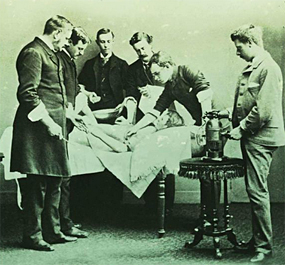Cruel to Be Kind

by Laura Gardner, P’12
For most of its 2,400 years, the practice of medicine has been a story of gruesome treatments and cures that kill. Only in the last century, writes Nathan Belofsky ’81 in his new book, “Strange Medicine: A Shocking History of Real Medical Practices Through the Ages” (Penguin, 2013), has medicine actually begun to make good on the Hippocratic ideal: first, do no harm.
The details can scare — if not scar — you. For instance, the ancient Greeks believed the womb of a lonely woman could escape her belly and run toward her head. (“Once escaped, a wandering womb was hard to find and even harder to catch,” Belofsky notes.) In the Middle Ages, one treatment for a stiff neck involved hammering pegs through the patient’s shoulders. Some practitioners treated jaundice by knocking a bat out cold, then applying it to a sufferer’s loins.
Even on the cusp of the Enlightenment, medical treatments relied heavily on purging, poisoning and putrefaction. To cure syphilis, doctors applied hot irons, knives or drills, not to mention flayed pigeons and mercury ointments.
Belofsky closes his treasury of (mostly) blunt-force trauma by discussing one of modern medicine’s darker practices — transorbital lobotomy. In the 1940s, Dr. Walter Freeman was so enamored of this mental illness “cure” that he would pack his kids and wife into the “lobotomobile” during the summer and perform the procedure at local hospitals in between visits to national parks.
Sometimes, “Strange Medicine” reminds us, doing nothing might be the best medicine of all.
